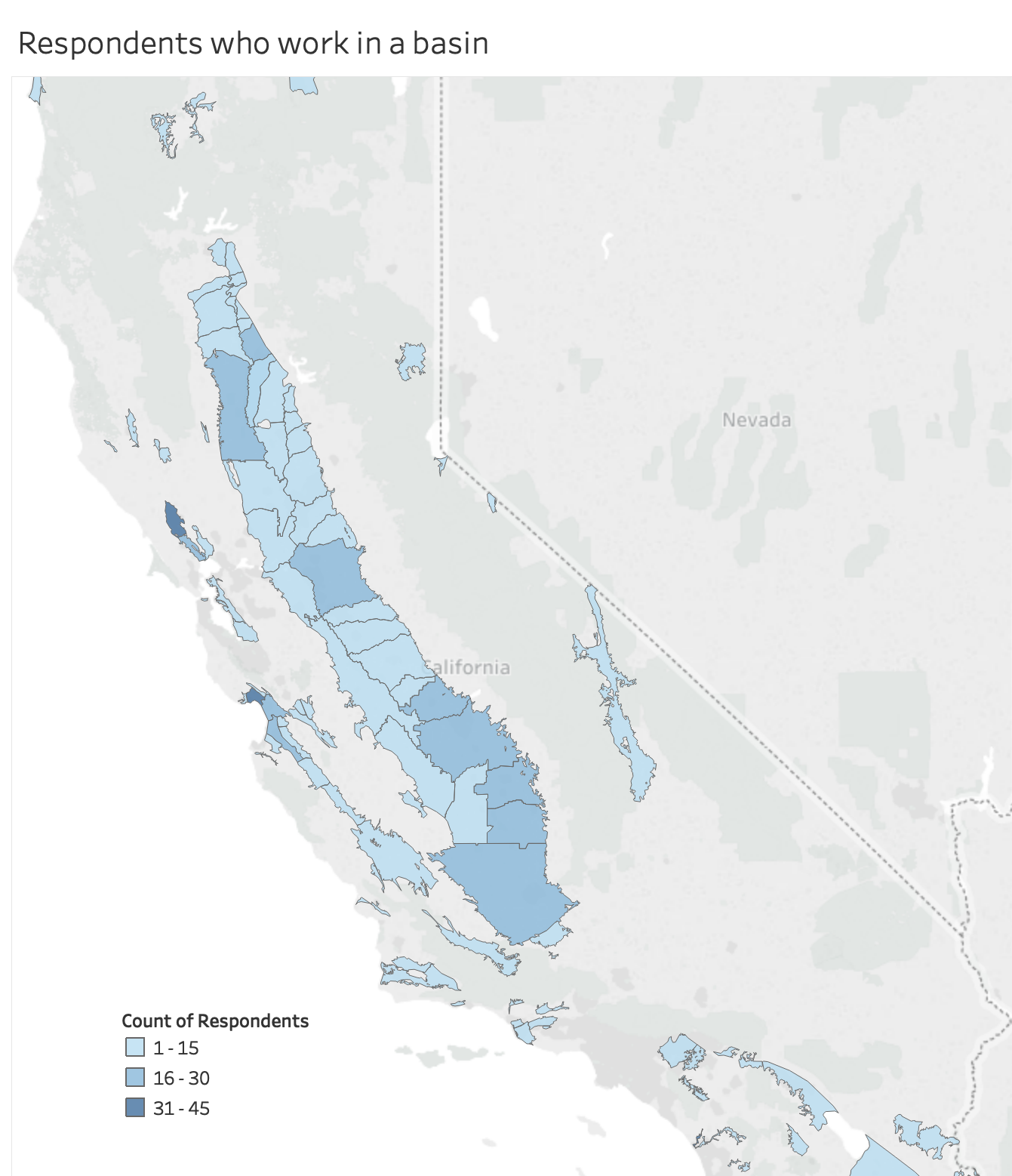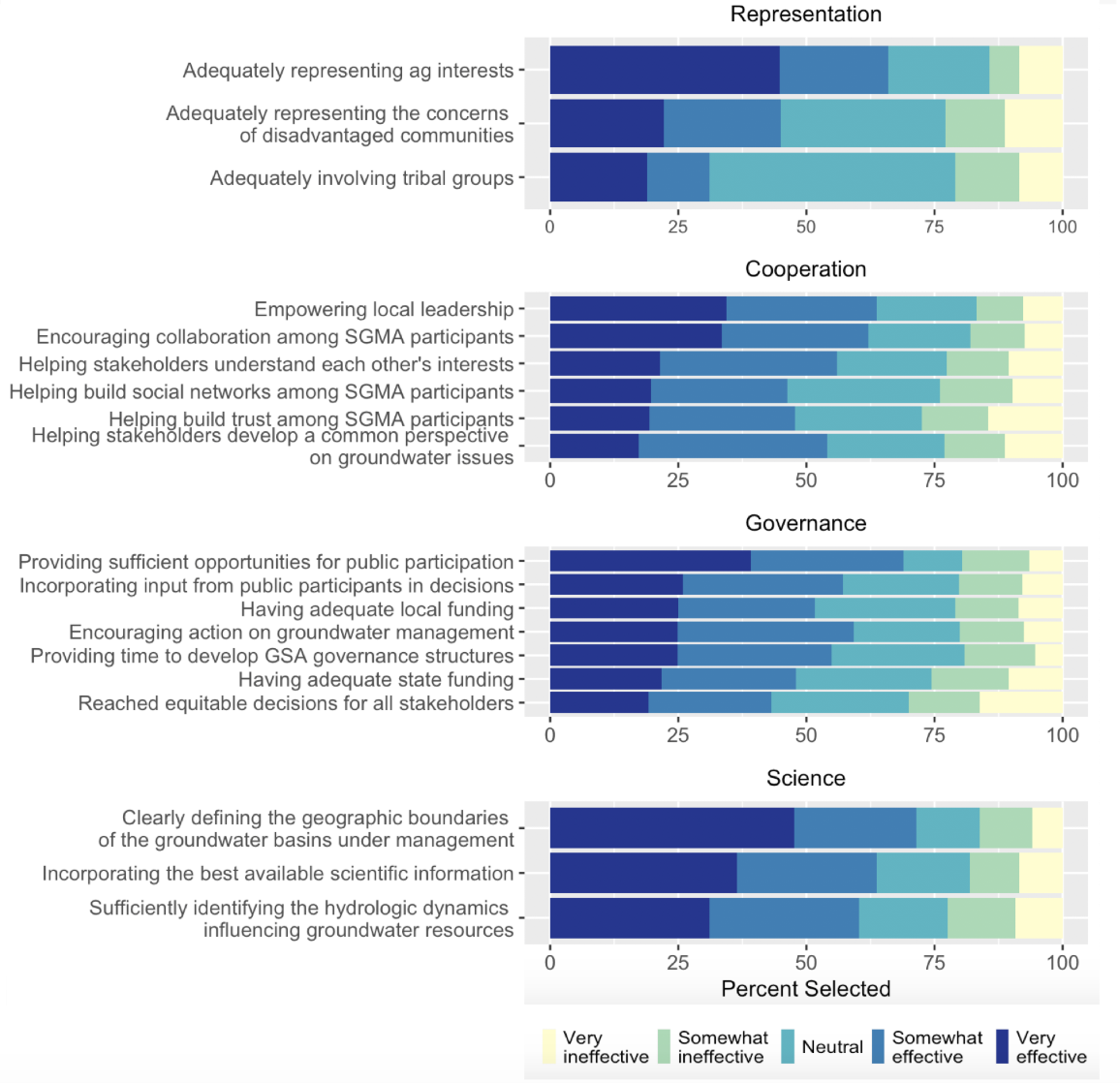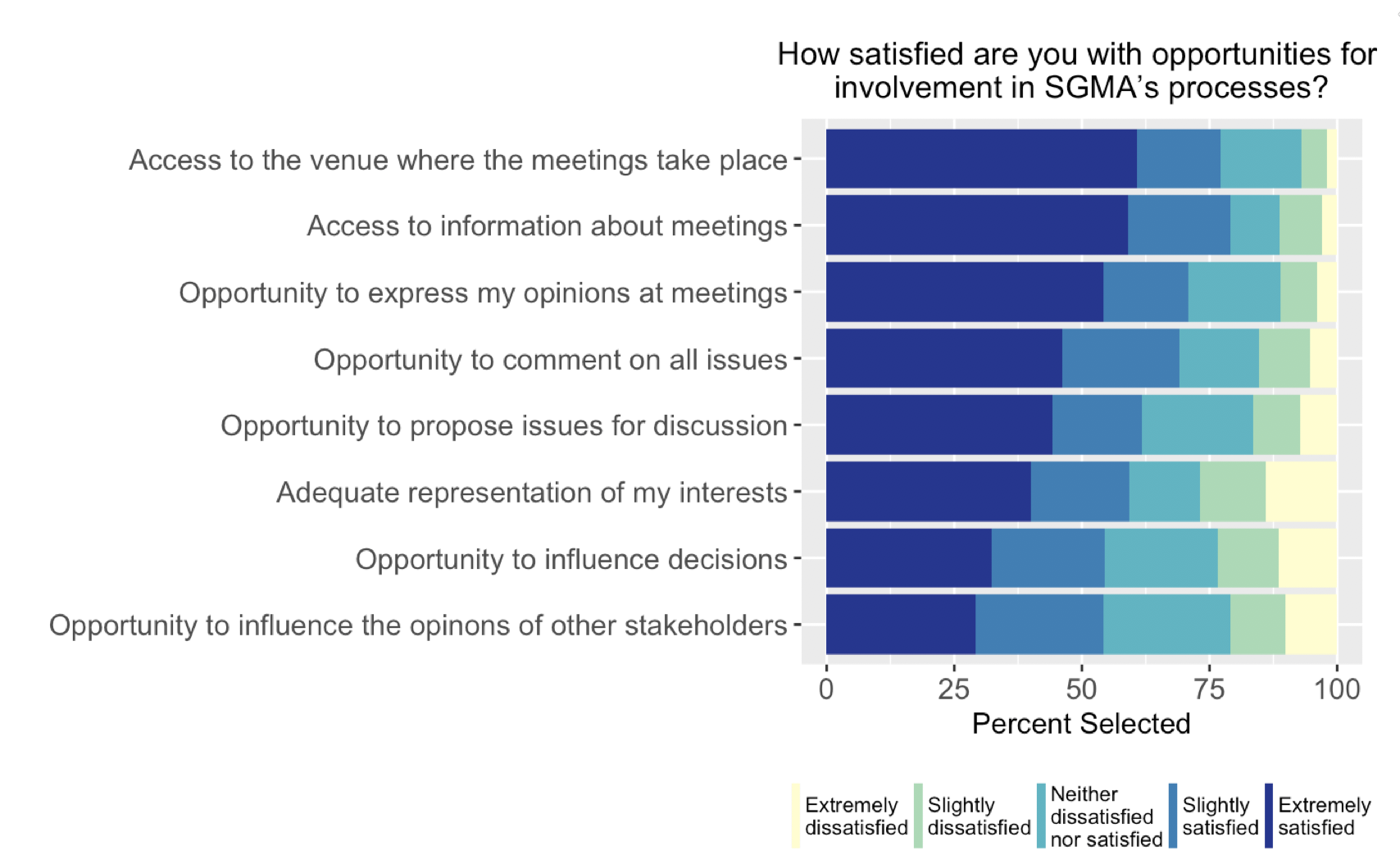
Implementing SGMA: Results from a stakeholder survey
By Linda E. Méndez-Barrientos, Darcy Bostic and Mark Lubell

The Sustainable Groundwater Management Act (SGMA) of 2014 represents a historic transition to collective groundwater resource management and has the potential to significantly reduce groundwater overdraft in California. A total of 260 groundwater sustainability agencies (GSAs) recently formed to collectively manage groundwater resources in the 127 high and medium priority groundwater basins of the state. The simultaneous formation of hundreds of new governing agencies is an unprecedented institutional effort with very few examples to learn from. As GSAs move towards the design and deliberation of their groundwater sustainability plans (GSPs), assessments on the process up until now can directly inform development processes that are still taking place.
This report summarizes the results from a state-wide survey that targeted SGMA participants. The survey sought information on perceptions regarding the SGMA process, access to participation and engagement, cross-sector and multi-actor collaboration, groundwater management strategies as well as stakeholder’s groundwater dependence and vulnerability.
The findings suggest that SGMA participants have little trust in SGMA’s capacity to achieve environmental and social outcomes, which is key for its success. Nevertheless, while they are not confident on the policy reform, they support a portfolio of practical solutions for groundwater management. This means that in general, survey respondents show support for taking necessary measures to solve groundwater overdraft.
Climate change events such as drought and governance are perceived as the two most pressing challenges for groundwater management. While the experience of SGMA is unsurprisingly diverse across California, the statewide perspective presented here provides some insights on challenges and processes that are crucial to SGMA’s success:

Science. The definition of clear geographic boundaries between groundwater basins and GSAs was generally characterized as effective. This is important because avoiding jurisdictional overlaps among GSAs managing groundwater basins is key to assign responsibility and accountability. Furthermore, inclusion of best available science and identification of hydrological dynamics influencing groundwater movement and quality were also perceived as effective in SGMA processes. All of these activities are key for the design and implementation of GSPs.
Cooperation. While 50% of respondents perceived that SGMA had effectively empowered local leadership, built social networks, encouraged collaboration and help stakeholders understand each other to agree on a common perspective, about 25% disagreed on SGMA’s effectiveness in achieving these outcomes. This is not surprising as SGMA governance arrangements have also been diverse, with some GSAs structured independently as single GSAs, and others as collective-action organizations or multi-agency GSAs.
Governance. There is a discrepancy between favorable perceptions of the opportunities given for public participation and perceptions of equity in decision-making. This paradox may be explained by differences in representation among groups and a reported hierarchy of participation access in SGMA processes; generally positive access to information about meetings and attendance contrasted with perceived less opportunities to comment on issues and express opinions, and even less opportunities to be adequately represented and influence decisions. This suggests that even among stakeholders who are involved in groundwater management and are knowledgeable about SGMA, there are important barriers to participation in SGMA processes.

Representation. Perceptions of adequate representation for agricultural interests, disadvantaged communities and tribal groups varied from 65%, less than 50% and about 30% respectively. Representation is key to ensure institutional legitimacy and equitable decision-making for all stakeholders. This finding suggests that SGMA participants perceive that new groundwater governance agencies have not done a sufficiently adequate job at integrating all interested groups. This is predictably supported by GSA data which shows that only 12% of all GSAs have included non-agency groups such as private pumpers, disadvantaged communities and tribal members in their decision-making boards.
Other governance questions such as adequate local and state funding, sufficient time to develop GSA governance structures and encouraging action on groundwater management received more mixed performance scores with about 50% of respondents considering they had been effective and around 25% of respondents giving neutral and negative answers to these categories.
Full Report available here: SGMA%20Survey%20report_CEPB.pdf
